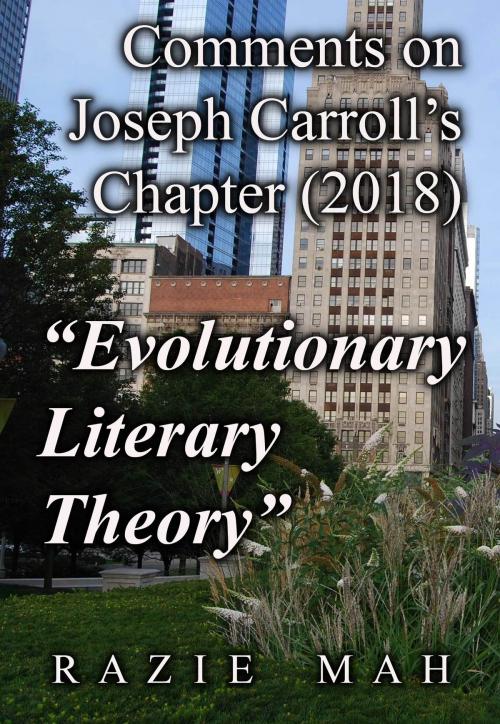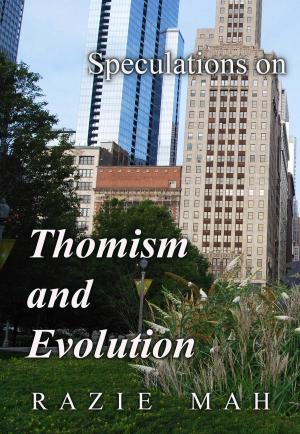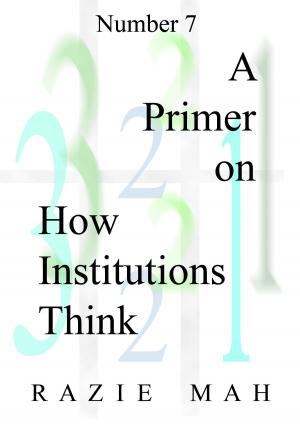Comments on Joseph Carroll’s Chapter (2018) "Evolutionary Literary Theory"
Fiction & Literature, Literary Theory & Criticism, Theory| Author: | Razie Mah | ISBN: | 9781942824626 |
| Publisher: | Razie Mah | Publication: | March 3, 2019 |
| Imprint: | Smashwords Edition | Language: | English |
| Author: | Razie Mah |
| ISBN: | 9781942824626 |
| Publisher: | Razie Mah |
| Publication: | March 3, 2019 |
| Imprint: | Smashwords Edition |
| Language: | English |
Hard-working Joseph Carroll publishes “Evolutionary Literary Theory" in A Companion to Literary Theory (first edition, edited by David H. Richter, 2018; John Wiley and Sons Ltd., New York; pages 425-438). He follows the current paradigm, where humans are constituted as a suite of solutions to the environment of evolutionary adaptation. He does not register the possibility that evolutionary scientists are detailing proximate niches, rather than an ultimate niche.
Evolutionary psychology, like all sciences, lacks perspective. Indeed, science veils perspective in order to get its job done. Science truncates the three-level interscope of content, situation and perspective, turning it into a two-level interscope of content and situation, characteristic of sensible thought.
Literary theory focuses on perspectives. So, initially, evolutionary literary theory denounces post-structuralist literary theories for lack of scientific "understanding". This is short sighted. Current literary theories hide behind the curtain acknowledged by scientific research, even as they ignore the content and situation of biology. They play on the perspective level.
As long as scientists detail proximate niches in human evolution, literary theorists are safely hidden, like needles in a haystack.
Carroll does not want to expose them. He wants to draw them out, into the open, as perspectives that defend themselves with pointed critiques of the literature that they should make more digestible, more flavorful and yummy. Yet, he cannot see their common weakness. Nor, can he envision the missing facet that evolutionary science assumes, but cannot measure, observe or mathematically model.
What is the human's ultimate niche?
Hard-working Joseph Carroll publishes “Evolutionary Literary Theory" in A Companion to Literary Theory (first edition, edited by David H. Richter, 2018; John Wiley and Sons Ltd., New York; pages 425-438). He follows the current paradigm, where humans are constituted as a suite of solutions to the environment of evolutionary adaptation. He does not register the possibility that evolutionary scientists are detailing proximate niches, rather than an ultimate niche.
Evolutionary psychology, like all sciences, lacks perspective. Indeed, science veils perspective in order to get its job done. Science truncates the three-level interscope of content, situation and perspective, turning it into a two-level interscope of content and situation, characteristic of sensible thought.
Literary theory focuses on perspectives. So, initially, evolutionary literary theory denounces post-structuralist literary theories for lack of scientific "understanding". This is short sighted. Current literary theories hide behind the curtain acknowledged by scientific research, even as they ignore the content and situation of biology. They play on the perspective level.
As long as scientists detail proximate niches in human evolution, literary theorists are safely hidden, like needles in a haystack.
Carroll does not want to expose them. He wants to draw them out, into the open, as perspectives that defend themselves with pointed critiques of the literature that they should make more digestible, more flavorful and yummy. Yet, he cannot see their common weakness. Nor, can he envision the missing facet that evolutionary science assumes, but cannot measure, observe or mathematically model.
What is the human's ultimate niche?















